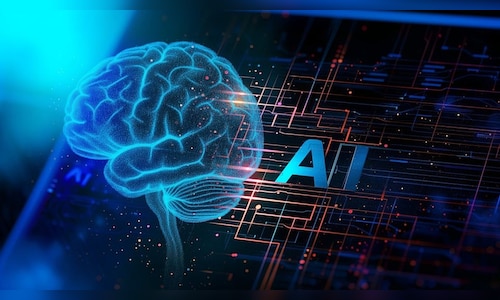Cerebras, a company specialising in AI-accelerating hardware, has ambitious plans for India. Currently, the company operates an office in Bengaluru with around 70 employees and aims to more than double its workforce by the end of the year. “We just took more office space, and so we’re looking to continue our very rapid growth,” Feldman stated.
Looking ahead, Cerebras has set its sights on expanding its Indian presence significantly over the next two years. “I think in two years, we should have 350 or 400 people in our India office. I think we’d like to have 10-12 exaflops of Cerebras compute in a single site, providing one of the largest AI supercomputers in India. I think I’d like to get there sometime in much less than two years,” Feldman added.
Cerebras specialises in building high-performance computing systems designed to accelerate AI workloads. Their approach differs significantly from industry leader NVIDIA, as they have developed the largest chip in computing history. “Compared to an NVIDIA chip, ours is 56 times larger, over 70 times faster in inference, and uses a fraction of the power,” Feldman explained.
Edited Excerpt from the Interview:
Q: Cerebras has an office in India. So, what are your plans for India, and where does India stand right now in this AI race?
Feldman: Today, we have about 70 people in Bengaluru, and we’re looking to double our office this year. We just took more office space, so we’re looking to continue our rapid growth.
India has some of the best universities in the world, both their IITs and their NITs. These are extraordinary universities. They have people who are driven and some great engineers. So, the environment is ripe for Indian entrepreneurship and India to play a leading role in AI.
Q: What is your India plan for the next two years?
Feldman: We should have 350 or 400 people in our India office in two years. We’d like 10-12 exaflops of Cerebras compute in a single site, providing one of India’s largest AI supercomputers. I’d like to get there sometime in much less than two years.
Q: Could you explain to us what you do at Cerebras?
Feldman: At Cerebras, we build big, fast computers whose job is to accelerate AI. AI has two parts. It has training, which is as we make AI, and inference, which is how we use AI. We build a chip and then a system, and the entire computer makes both training and inference faster and easier and uses less power.
Q: When we talk about chips, the first thing that comes to mind is NVIDIA. If you could tell us how you are doing this differently,
Feldman: There are lots of ways to make chips. We chose a way that focused on the exact problem posed by AI. And the hard part about AI for a computer is the amount of data that needs to be moved. And so, we built a very big chip. We built the biggest chip in the computer industry’s history, which allows us to move data less often, keep it on chip, work on it faster, and use less power.
Q: So, how much faster is the Cerebras chip? How much more efficient is it? What makes it different?
Feldman: Our chip is about 56 times larger than any other. So, compared to an NVIDIA chip, it is 56 times larger, is over 70 times faster in inference, and uses a fraction of the power. So, this one chip is faster, uses less power, and makes your AI experience more enjoyable.
Q: You now host DeepSeek on your platform. And it’s making waves. It is what people are talking about. And the thing about DeepSeek is that it’s so much cheaper than what a ChatGPT would do or how you would do that. So why is that the case?
Feldman: We host a whole range of models. We host open-source models like LLaMA from Meta and DeepSeek from DeepSeek. We also host closed-source models for particular customers, like Mistral and Perplexity and many others, and all of those are served to customers via our cloud. What makes it faster? It’s a good question. By being a bigger chip, we have to move information less far, which takes time to compute. And so, these big chips move information more quickly using less power. As a result, all these different models, whether DeepSeek, LLaMA, Perplexity, or Mistral, all provide a better user experience.
Q: One of the things that comes up is accuracy. For instance, on DeepSeek, there are specific questions you can’t ask or won’t get an answer to. So how does someone circumvent that when so much information is passed through?
Feldman: DeepSeek was trained by a Chinese company, and it has a whole set of politically-correct-for-the-Chinese-government training. When you use AI, I encourage you not to give up your common sense.
Q: Another question that comes up is, then, about privacy and security when it comes to AI, how you’re using it, and the information that’s being passed through. So, what about guardrails when it comes to AI? Who needs to put that up? Does the government need to work with corporations and figure this out, or what sort of guardrails need to come into play to make AI safer for everybody?
Feldman: I think the government has a role, but it wants to regulate. As entrepreneurs, we want to innovate, and we like the government to be out of innovation. We are, as a community, careful and thoughtful. We know that powerful technologies can be used for good and evil. There is a responsibility on the consumer as well — don’t put your social security number or tax information in. Use common sense at every stage, just like any other technology.
Q: So, you’re saying that everybody has to be responsible for how they use AI because then it helps regulate it much better.
Feldman: Yes. We’re not abdicating responsibility; as the industry, we must put in guardrails. We must make it safer, and our users must use common sense.
Watch the accompanying video for the entire conversation.


